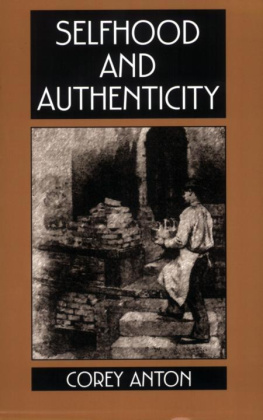Erving Goffman - Behavior in Public Places
Here you can read online Erving Goffman - Behavior in Public Places full text of the book (entire story) in english for free. Download pdf and epub, get meaning, cover and reviews about this ebook. year: 1963, publisher: Simon & Schuster, genre: Romance novel. Description of the work, (preface) as well as reviews are available. Best literature library LitArk.com created for fans of good reading and offers a wide selection of genres:
Romance novel
Science fiction
Adventure
Detective
Science
History
Home and family
Prose
Art
Politics
Computer
Non-fiction
Religion
Business
Children
Humor
Choose a favorite category and find really read worthwhile books. Enjoy immersion in the world of imagination, feel the emotions of the characters or learn something new for yourself, make an fascinating discovery.

- Book:Behavior in Public Places
- Author:
- Publisher:Simon & Schuster
- Genre:
- Year:1963
- Rating:5 / 5
- Favourites:Add to favourites
- Your mark:
- 100
- 1
- 2
- 3
- 4
- 5
Behavior in Public Places: summary, description and annotation
We offer to read an annotation, description, summary or preface (depends on what the author of the book "Behavior in Public Places" wrote himself). If you haven't found the necessary information about the book — write in the comments, we will try to find it.
Erving Goffman: author's other books
Who wrote Behavior in Public Places? Find out the surname, the name of the author of the book and a list of all author's works by series.
Behavior in Public Places — read online for free the complete book (whole text) full work
Below is the text of the book, divided by pages. System saving the place of the last page read, allows you to conveniently read the book "Behavior in Public Places" online for free, without having to search again every time where you left off. Put a bookmark, and you can go to the page where you finished reading at any time.
Font size:
Interval:
Bookmark:
Behavior
in Public Places
Behavior
in Public Places
NOTES ON
THE SOCIAL ORGANIZATION
OF GATHERINGS
ERVING GOFFMAN

THE FREE PRESS
New York

THE FREE PRESS
A Division of Simon & Schuster Inc.
1230 Avenue of the Americas
New York, NY 10020
www.SimonandSchuster.com
Copyright 1963 by The Free Press
All rights reserved,
including the right of reproduction
in whole or in part in any form.
THE FREE PRESS and colophon are trademarks
of Simon & Schuster Inc.
First Free Press Paperback Edition 1966
Manufactured in the United States of America
printing number
23 25 27 29 30 28 26 24 22
ISBN-13: 978-0-029-11940-2
eISBN-13: 978-1-439-10869-7
Library of Congress Catalog Card Number: 62-11850
Acknowledgments
MUCH of the material for this report was gathered in 1954-1957 while I was a visiting member of the Laboratory of Socio-environmental Studies of the National Institute of Mental Health. The mental hospital material derives chiefly from a years participant observation study of the social life of mental patients, done under the auspices of the Laboratory in 1955-1956. I am grateful to the then Laboratory Chief, John A. Clausen, and to Dr. Winfred Overholser, the then Superintendent of Saint Elizabeths Hospital, Washington, D.C., for what turned out to be complete freedom to look at whatever I wanted and to publish records of what I saw. I am grateful also to the Society for the Study of Human Ecology, whose support allowed me to spend the summer of 1959 working on the manuscript, and to the University of Californias Center for the Integration of Social Science Theory, through which I obtained time off from teaching during 1958-1960 for further work on the manuscript.
I would like to express my gratitude to David Schneider, Charlotte Green Schwartz, Gregory Stone, and Fred and Marcia Davis for much help in the early organization of this report.
12 The Structure and Function of Situational
Proprieties
14 The Symptomatic Significance of Situational
Improprieties
Introduction
The Problem
IN DIAGNOSING mental disorder and following its hospital course, psychiatrists typically cite aspects of the patients behavior that are inappropriate in the situation. Since this special kind of misconduct is believed to provide one obvious sign of mental sickness, psychiatrists have given much time to these improprieties, developing the orientation and observational skills needed to study them, describing them in detail, seeking to understand their meaning for the patient, and obtaining a mandate to discuss them in the academic pressa mandate required because many of these delicts are petty, embarrassing, or messy. We sociologists should be grateful for this harvest, all the more so because it has been brought in by delicate hands. We can express our gratitude by trying to appropriate the yield for our own market, offering in exchange some observations about social situations that we appropriated long ago from anthropology.
By and large, the psychiatric study of situational improprieties has led to studying the offender rather than the rules and social circles that are offended. Through such studies, however, psychiatrists have inadvertently made us more aware of an important area of social lifethat of behavior in public and semipublic places. Although this area has not been recognized as a special domain for sociological inquiry, it perhaps should be, for rules of conduct in streets, parks, restaurants, theaters, shops, dance floors, meeting halls, and other gathering places of any community tell us a great deal about its most diffuse forms of social organization.
Sociology does not provide a ready framework that can order these data, let alone show comparisons and continuities with behavior in private gathering places such as offices, factory floors, living rooms, and kitchens. To be sure, one part of collective behaviorriots, crowds, panicshas been established as something to study. But the remaining part of the area, the study of ordinary human traffic and the patterning of ordinary social contacts, has been little considered. It is well recognized, for instance, that mobs can suddenly emerge from the peaceful flow of human traffic, if conditions are right. But little concern seems to have been given to the question of what structure this peaceful intercourse possesses when mob formation is not an issue. It is the object of this report to try to develop such a framework. Some data have been drawn from a study of a mental hospital (hereafter called Shetland Isle), some from manuals of etiquette, and some from a file where I keep quotations that have struck me as interesting. Obviously, many of these data are of doubtful worth, and my interpretationsespecially of some of themmay certainly be questionable, but I assume that a loose speculative approach to a fundamental area of conduct is better than a rigorous blindness to it.
I will rely on the familiar distinction between acts that are approved and acts that are felt to be improper. This simple dichotomy makes for economy of presentation, allowing me to bypass unresolved issues and to proceed to ones that might be resolved. Before taking this license, however, some matters it covers should be mentioned.
Although some specific illustrations used in this report are taken from sources dealing with non-Western society, my own experience has been mainly with middle-class conduct in a few regions of America, and it is to this that most of my comments apply. An act can, of course, be proper or improper only according to the judgment of a specific social group, and even within the confines of the smallest and warmest of groups there is likely to be some dissensus and doubt. The degree of dissensus or consensus in a group concerning the propriety of an actand even the boundaries of the group itselfcannot be established by my assertions but only by systematic empirical research. This report, however, is full of such unverified assertions. Yet this avowed weakness should not be confused with one that is disavowed: nowhere in this report do I mean to convey that I personally hold some act to be proper or improper, although the method of presentation may occasionally give this impression.
It is in the context of this middle-class point of reference that I want to explain my use of quotations from etiquette manuals. When Mrs. Emily Post makes a pronouncement as to how persons of cultivation act, and how other persons ought therefore to act, sociologists often become offended. Their good reason for snubbing Mrs. Post is that she provides little evidence that the circle about which she speaks has any numerical or social significance, that its members do in fact conduct themselves as she says they do, or even that these personsor any othersconsider that one ought so to conduct oneself.
These doubts impute much more creativity to etiquette writers than they possess. Although these writers do not empirically test their claims as to what is regarded as proper, it seems to me they are still describing some of the norms that influence the conduct of our middle classes, even though on many occasions other factors will predominate. Moreover, these books are one of the few sources of suggestions about the structure of public conduct in America. It is my feeling that the main drawback to using these books as data for social science is not the unvalidated nature of the statements they containfor statements can always be checked by researchbut rather that these books tend to provide a mere catalogue of proprieties instead of an analysis of the system of norms underlying those proprieties.
Next pageFont size:
Interval:
Bookmark:
Similar books «Behavior in Public Places»
Look at similar books to Behavior in Public Places. We have selected literature similar in name and meaning in the hope of providing readers with more options to find new, interesting, not yet read works.
Discussion, reviews of the book Behavior in Public Places and just readers' own opinions. Leave your comments, write what you think about the work, its meaning or the main characters. Specify what exactly you liked and what you didn't like, and why you think so.







